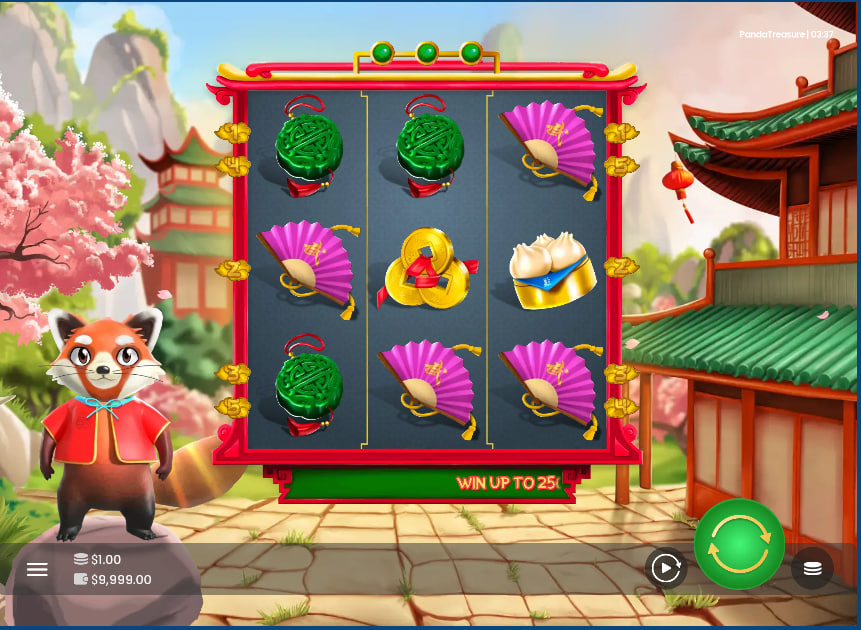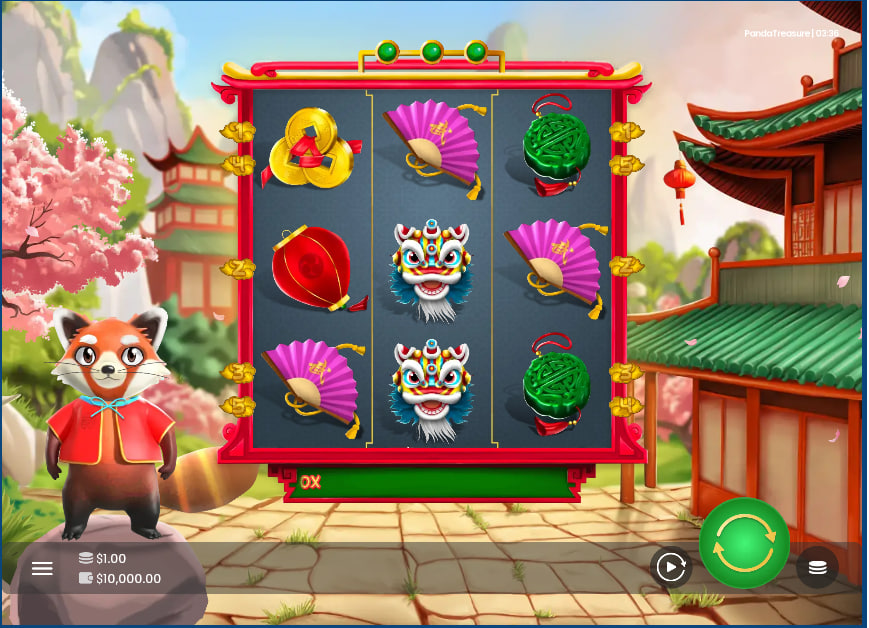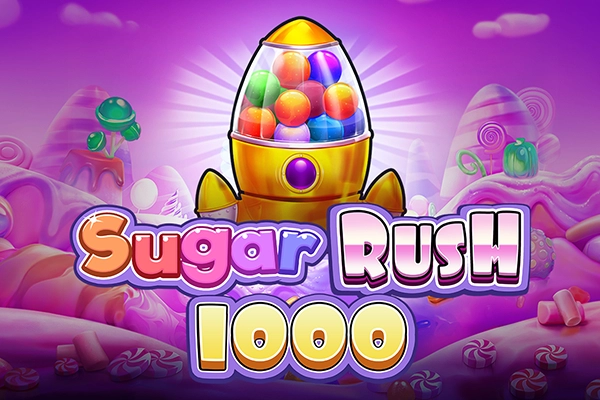FBM’s Panda Treasure presents a charming Asian theme centered around a friendly red panda mascot. The game operates on a classic 3×3 reel layout, creating a serene and uncluttered atmosphere during standard play. With a medium volatility math model, the base game delivers balanced and consistent results. The slot’s theoretical RTP is a solid 96.00%, placing it firmly within the industry average. Its defining characteristic is the complete absence of scatter symbols, with the main Bonus Mode activating entirely at random on any spin. This feature shifts the game to a hold-and-win respin round with sticky symbols. The conclusion of this bonus applies a powerful random multiplier of up to 25x to the total winnings. This design concentrates the game’s full potential into a single, high-impact event that defines the entire player experience.
FBM's Panda Treasure presents itself with a classic 3×3 reel structure, a design choice that often signals a straightforward, retro-inspired session. However, this initial impression is deceiving. The game's core design philosophy discards the traditional scatter-based entry into bonus rounds, instead building its entire high-payout potential around a single, potent feature that can activate on any given spin without warning. Accompanied by an ever-present, animated red panda, the game establishes a gameplay loop where the quiet simplicity of the base game is consistently punctuated by the possibility of a sudden and dramatic shift in mechanics. It's a title that wagers its appeal not on a multitude of features, but on the suspense and impact of its one central event.

The Core Gameplay Driver: A Randomly Activated Bonus Mode
The most significant aspect of Panda Treasure is its Bonus Mode, an element that completely redefines the play session when it occurs. Its implementation deviates from the standard industry formula, creating a distinct experience for the player.
The activation mechanism is the first point of divergence. There are no scatter symbols to collect or specific combinations to land. The Bonus Mode is initiated entirely at random during the conclusion of any base game spin, whether that spin resulted in a win or not. This design decision fundamentally alters the player's anticipation. Instead of watching for a third scatter symbol to land, the focus remains on every single spin, as any one of them could be the trigger. This creates a sustained level of suspense that is not concentrated on specific symbols but is diffused across the entire session.
Once triggered, the game board undergoes a complete transformation. A single paying symbol from the paytable is randomly selected to be the “special symbol” for the duration of the feature. The standard 3×3 grid is cleared of all other icons, and the player is awarded three initial spins. The objective shifts from forming paylines to filling the screen with the chosen special symbol and any Wilds that may appear. This format is recognizable as a “hold-and-win” or “respin” feature. When a new special symbol or a Wild lands on the grid, it becomes sticky, locking in place for the remainder of the bonus. Critically, each new symbol that lands also resets the spin counter back to three, prolonging the feature and providing more opportunities to fill the grid. The round concludes either when all three spins are used without a new symbol landing, or when all nine positions on the grid are filled.
The true financial impact of the Bonus Mode is revealed only at its conclusion. After the respin sequence ends, all winning combinations formed by the sticky symbols are calculated. This total prize is then subjected to a final random multiplier. The available multipliers are 5x, 10x, 15x, 20x, or a substantial 25x. This final step elevates the feature from a simple collection game to a moment of high potential. A full grid of a high-value symbol, which would already constitute a significant win, can be amplified to a game-changing amount by the application of the highest multiplier. The game's maximum payout is capped at 2500x the initial bet, a ceiling that is most likely to be reached during this phase.
Visual Presentation and Thematic Execution
Panda Treasure's aesthetic is one of deliberate charm and polished simplicity. The art direction avoids the ornate, often historically dense approach of many Asian-themed slots, opting instead for a bright, clean, and almost storybook-like presentation. The background depicts a serene mountain landscape with traditional pagodas, soft clouds, and gently blooming cherry trees. The color palette is vibrant without being garish, dominated by soft blues, greens, and the auspicious reds of the game frame and lanterns. The overall atmosphere is calm and inviting, providing a pleasant visual space for the gameplay to unfold.
A key element of the game's personality is the animated red panda character positioned to the left of the reels. This is not a static graphic; the character is an active observer of the game, displaying subtle animations and reactions. It may adjust its stance, show a look of anticipation, or celebrate a win. This constant presence adds a layer of engagement to what could otherwise be a visually plain 3×3 setup. It gives the game a companionable feel, making the player's session feel less solitary.
The symbol designs are rendered in a clean, cartoon style that matches the overall aesthetic. Icons include a ceremonial dragon mask, a magenta fan, Chinese lucky coins, a red lantern, steamed dumplings, and a green woven ball. Each is clearly distinguishable, which is crucial on a smaller grid. Winning animations are reserved but effective; symbols involved in a payout might pulse with light or perform a small, self-contained animation. The effects are sufficient to provide feedback without disrupting the game's placid rhythm.
A Closer Look at the 3×3 Mechanical Framework
The choice of a 3×3 reel configuration immediately sets certain expectations. For the experienced player, it can suggest a limited number of paylines and a reliance on simple, direct wins. In Panda Treasure, this is largely true for the base game. Standard play involves matching three symbols across a payline, with payouts awarded from left to right. The Wild symbol, which can substitute for any other paying icon, plays a vital role here in completing or improving these three-of-a-kind combinations.
The base game functions as a deliberately low-intensity phase. Its purpose is to provide a steady, if modest, series of events while the player awaits the random trigger of the Bonus Mode. The medium volatility mathematical model supports this design. It is engineered to provide a sufficient frequency of small-to-moderate wins to maintain a player's balance and engagement over time. The primary function of the base game is, therefore, not to generate spectacular wins on its own, but to serve as the platform from which the high-potential bonus feature is launched.
This dynamic creates an interesting interplay between simplicity and potential. The 3×3 grid reduces the cognitive load on the player—there are no complex mechanics like cascades, expanding ways, or intricate symbol collections to track during normal spins. The focus is singular: the outcome of the spin and the ever-present chance of the Bonus Mode trigger. This design makes the game highly accessible while concentrating all of its excitement into one specific, randomly occurring event.

Volatility, RTP, and Payout Structure Analysis
With a theoretical Return to Player (RTP) of 96.00% and a medium volatility rating, Panda Treasure positions itself squarely within industry standards. However, the distribution of this RTP is heavily skewed. A significant portion of the game's total payout potential is sequestered within the Bonus Mode, specifically within the final multiplier stage.
The medium volatility designation implies a balanced risk-to-reward ratio. In the context of this slot, it means that the base game is expected to return smaller wins with reasonable consistency. However, the potential for substantial returns—those approaching the 2500x cap—is almost exclusively dependent on triggering the Bonus Mode and, critically, being awarded one of the higher-tier final multipliers (20x or 25x). A player's session experience will likely be characterized by long stretches of modest returns, punctuated by the explosive potential of the bonus feature. This structure makes the game a pursuit of a specific event rather than an accumulation of incremental gains.
FBM (Fábrica de Bingos e Máquinas) comes from a background that includes the development of physical gaming machines. This heritage is often perceptible in their online slot designs, and Panda Treasure is a prime example. The game possesses the robust, straightforward feel of a classic land-based slot, particularly in its 3×3 grid and simple base game loop.
However, the developer has layered a distinctly modern, online-centric feature on top of this classic foundation. The randomly triggered hold-and-win bonus with a final multiplier is a mechanic built for the digital space, designed to create viral moments and high-impact replays. This blend of old-school structure with a new-school core feature is a hallmark of FBM's approach. For players who find the constant activity of modern multi-feature slots to be fatiguing, the design of Panda Treasure may be a welcome change of pace. It prioritizes patience and the anticipation of a single, powerful event over continuous, smaller feature activations. The game's appeal lies in its disciplined focus, making it a well-executed title for those who appreciate a gameplay loop built around suspense and sudden bursts of high-stakes action.













